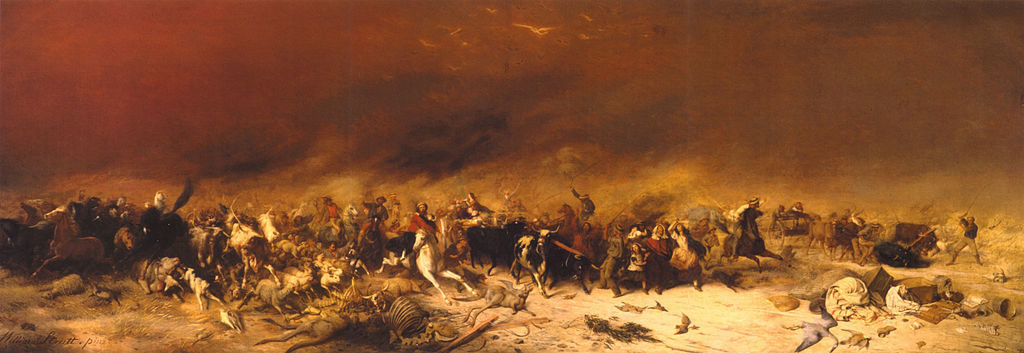
It is the time of year when Australia often experiences extreme weather events. February is renowned as the hottest month and, in some parts of the country, also the wettest month. It often brings cyclones to our coasts and storms, which conversely enough, may trigger fires as lightening strikes the hot, dry bush. Aboriginal people carefully managed the Australian environment in the period before contact with Europeans. They used strict fire-management regimes on small and large scales to manage the timing and occurrence of fires, the impact on vegetation (including for those native plant species that need fire to germinate), as well as the impact on people (who had inhabited every corner of the continent for many thousands of years) and animals.
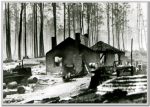
Disruptions of traditional Aboriginal ways of life in the 18th and 19th centuries had many severe impacts – on Aboriginal people, on the Australian environment, and on the European settlers in turn. One of these impacts was the breaking down of the country-wide fire management schemes which has been in place before the colonial period. European settlers did not recognise the necessity for regulated burning in the Australian landscape. The build-up of dry timber fuel meant that when storms brought lightening, as in Victoria in February, 1851, large swaths of bush burnt with unstoppable fury. Similarly ferocious fires in Victoria in 1939 (the Black Friday fires) led governments to start to re-introduce fire management schemes. Today these fire management schemes protect us from the worst fury of bushfires, just as they did back in pre-colonial Australia.
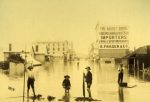
At the other end of the scale the storms and cyclones of February often bring flooding rains, especially to Queensland, NSW and Western Australia. In 1852 in Gundagai, NSW, in February 1893 in Brisbane and in many other times and places, most recently 2011 in Brisbane, devastation and loss of property and life have accompanied these events. Seven of the worst 10 floods in Australia have occurred in summer, with several in February. Aboriginal people avoided living in low-lying areas, especially during times of potential flooding, during the pre-colonial period. In fact, Aboriginal people warned the people of Gundagai, NSW, that their settlement was too close to the river before the floods, and were instrumental in saving one fifth of the town’s population from drowning during the floods themselves.
Fortunately this year we have not had any dramatic extreme weather events, but, these topics can still be built into HASS studies (as they are in the OpenSTEM® Understanding Our World® program). Students in Year 5 study natural disasters and the environment as part of the HASS curriculum, however, discussions about climate (Year 3) and Aboriginal Australia (Year 4) can also be incorporated into these topics. OpenSTEM® resources (some of which are linked above) also include quotes of primary sources, as well as contemporary paintings and photographs, addressing necessary skills across a range of year levels.

 The modern Olympic games were started by Frenchman Henri de Baillot-Latour to promote international understanding. The first games of the modern era were held in 1896 in Athens, Greece. Australia has competed in all the Olympic games of the modern era, although our participation in the first one was almost by chance. Of course, the Olympics predated Federation by 5 years, so there was officially no “Australia” as a unified country – rather a collection of separate colonies of Britain. In fact, OpenSTEM®‘s
The modern Olympic games were started by Frenchman Henri de Baillot-Latour to promote international understanding. The first games of the modern era were held in 1896 in Athens, Greece. Australia has competed in all the Olympic games of the modern era, although our participation in the first one was almost by chance. Of course, the Olympics predated Federation by 5 years, so there was officially no “Australia” as a unified country – rather a collection of separate colonies of Britain. In fact, OpenSTEM®‘s 


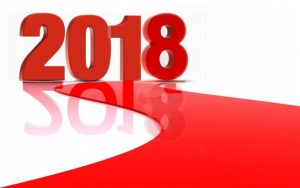
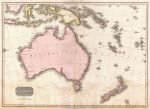 Well, most of our schools are back, or about to start the new year. Did you know that there are schools using OpenSTEM materials in every state and territory of Australia? Our wide range of resources, especially those on Australian history, give detailed information about the history of all our states and territories. We pride ourselves on having a resource on every topic in the Australian HASS and Science curriculum for primary school, so if you find something that you think is missing, please let us know and if it’s not there already, it soon will be!
Well, most of our schools are back, or about to start the new year. Did you know that there are schools using OpenSTEM materials in every state and territory of Australia? Our wide range of resources, especially those on Australian history, give detailed information about the history of all our states and territories. We pride ourselves on having a resource on every topic in the Australian HASS and Science curriculum for primary school, so if you find something that you think is missing, please let us know and if it’s not there already, it soon will be!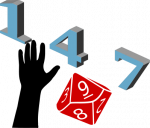 Last year, after requests from some of the teachers we work with, OpenSTEM® started developing resources to assist with the Maths curriculum. Our Diced Maths® resources have been so popular that some students have even asked if they could swap from computer-based Maths programs to the Diced Maths resources! Students report that these resources make them feel more in control of their own learning and love “playing” with the funky dice. Many don’t see the activities as “doing Maths” at all. These activities develop students’ problem solving skills, whilst practising all their basic Maths concepts and operations at the same time.
Last year, after requests from some of the teachers we work with, OpenSTEM® started developing resources to assist with the Maths curriculum. Our Diced Maths® resources have been so popular that some students have even asked if they could swap from computer-based Maths programs to the Diced Maths resources! Students report that these resources make them feel more in control of their own learning and love “playing” with the funky dice. Many don’t see the activities as “doing Maths” at all. These activities develop students’ problem solving skills, whilst practising all their basic Maths concepts and operations at the same time. Our youngest students in Foundation/Prep/Kindy (
Our youngest students in Foundation/Prep/Kindy ( Slightly older students in Years 1 (
Slightly older students in Years 1 (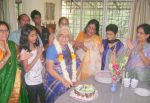 Students in Year 3 (
Students in Year 3 ( Well, the end of term is in sight! End of year reporting is in full swing and the Understanding Our World® activities are designed to keep students engaged whilst minimising requirements for teachers, especially over these critical weeks. The current activities for all year levels are tailored to require minimal teaching, allowing teacher aides and other helpers to assist students while teachers can be free to concentrate on reporting and other requirements. All year levels have now passed the threshold of completing all curriculum material for the year for all HASS subjects as well as Science, so no more formal assessment is needed. The final weeks are focused on fun, whilst carrying the themes covered earlier in the term, and year, forwards, so that the fun enhances the learning, rather than detracting from it.
Well, the end of term is in sight! End of year reporting is in full swing and the Understanding Our World® activities are designed to keep students engaged whilst minimising requirements for teachers, especially over these critical weeks. The current activities for all year levels are tailored to require minimal teaching, allowing teacher aides and other helpers to assist students while teachers can be free to concentrate on reporting and other requirements. All year levels have now passed the threshold of completing all curriculum material for the year for all HASS subjects as well as Science, so no more formal assessment is needed. The final weeks are focused on fun, whilst carrying the themes covered earlier in the term, and year, forwards, so that the fun enhances the learning, rather than detracting from it.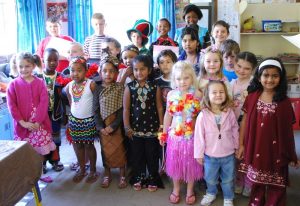 Students in Years 3 (
Students in Years 3 (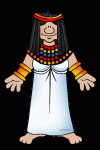 Foundation/Prep/Kindy to Year 3
Foundation/Prep/Kindy to Year 3 Students in Years 3 (
Students in Years 3 (
History and Geography are no longer boring and dry, and the material provides a wide variety of topics.
Laura Davidson, Teacher